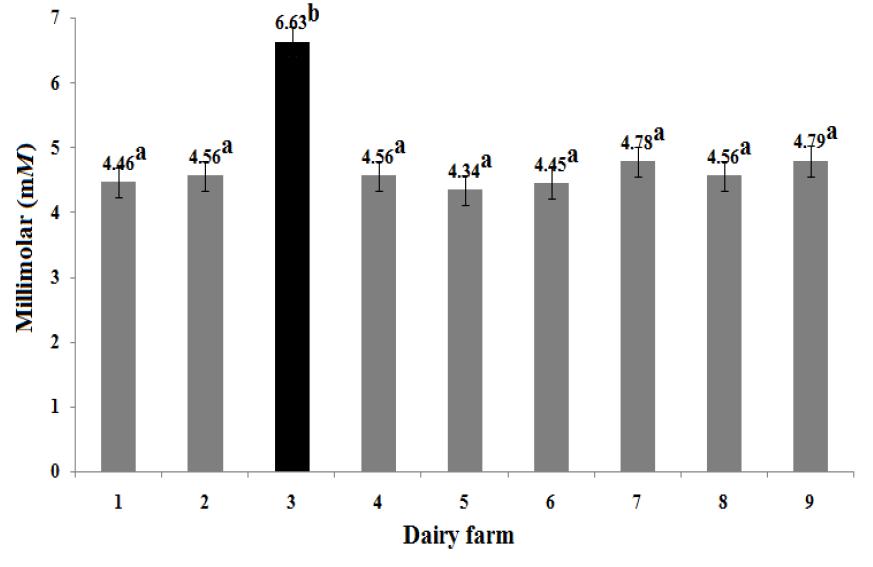ABSTRACT
Blood samples of 189 healthy Holstein cows classified as high-producers, low-producers, or dry cows, were collected with the purpose of establishing reference values for several biochemical analytes in Mexican dairy farms. Mean values were calculated for: 1) Energy profile: glucose, cholesterol, triglycerides, β-hydroxybutyrate, and non-esterified fatty acids, 2) Protein profile: urea, albumin, globulin, and total protein, 3) Mineral profile: calcium, phosphorus, sodium, potassium, magnesium, chlorine, carbon dioxide, bicarbonate, and anion gap, and 4) Hepatic enzyme: γ-glutamyl transpeptidase. The resulting data set was analyzed using Gaussian distribution and descriptive statistics. Confidence intervals of 95% were established. The linear relationships between the biochemical analytes were quantified, and an analysis of variance was performed to compare the mean values between the three production groups. The overall concentrations of the described analytes are consistent with values reported by international literature. However, lower values were found for urea, calcium, and sodium; higher values were found for cholesterol, and γ-glutamyl transpeptidase. Negative correlations were found between β-hydroxybutyrate and glucose or urea, γ-glutamyl transpeptidase and urea, and bicarbonate and urea or phosphorus or anion gap. Positive correlations were found between β-hydroxybutyrate and cholesterol or anion gap, non-esterified fatty acids and anion gap, cholesterol and globulin, different analytes of mineral profile and anion gap or urea or glucose, and between sodium and calcium. Differences among the three production groups were observed for β-hydroxybutyrate and cholesterol concentrations. The γ-glutamyl transpeptidase concentration was similar in high and low-producing cows but was higher in comparison to serum levels of dry cows. Calcium showed differences between high-producing cows and the other two groups, and sodium showed the highest concentration in dry cows. The outcomes of this work improve the accuracy of the metabolic profiles as a tool for assessing the nutritional and health status of dairy cows.
Keywords:
dairy cow; blood chemistry; metabolic profile


